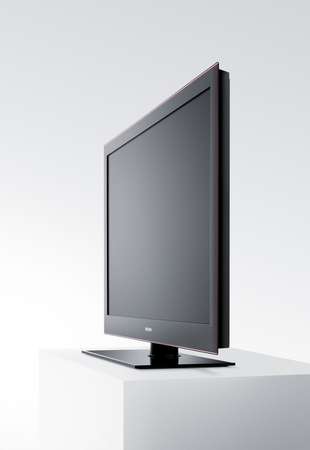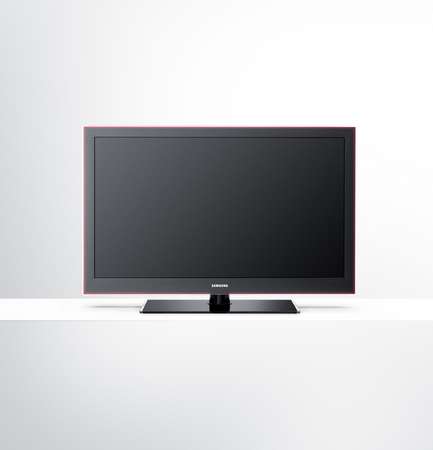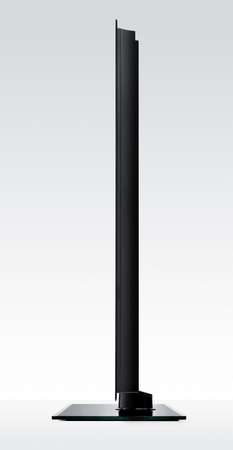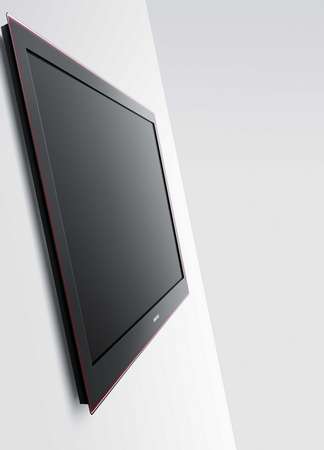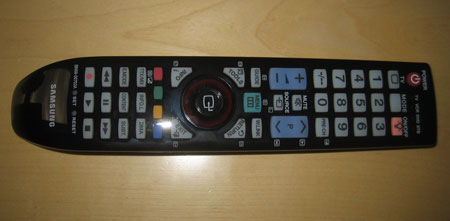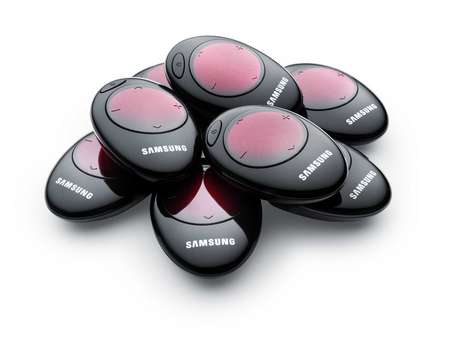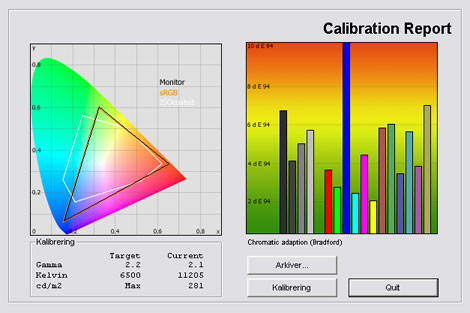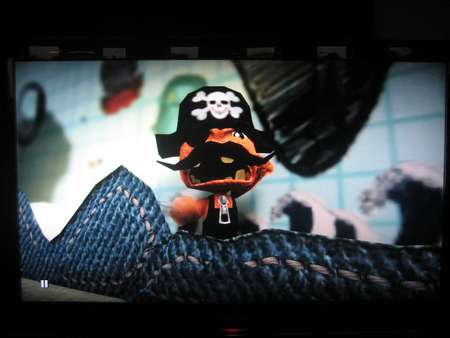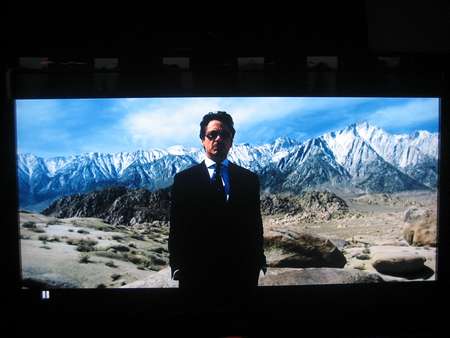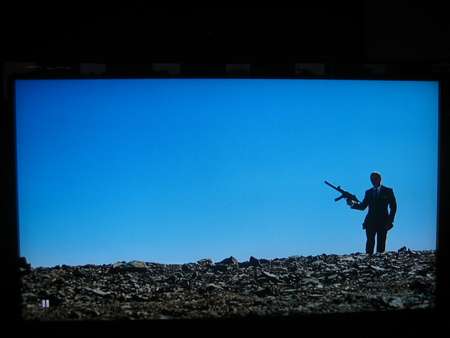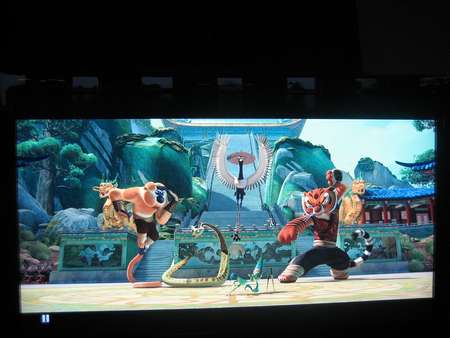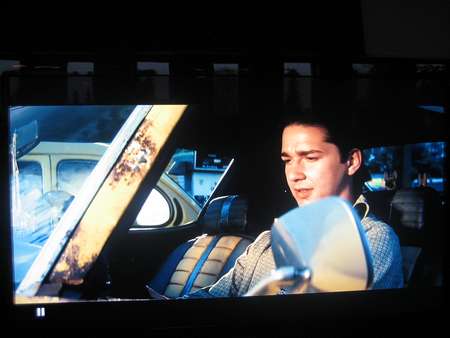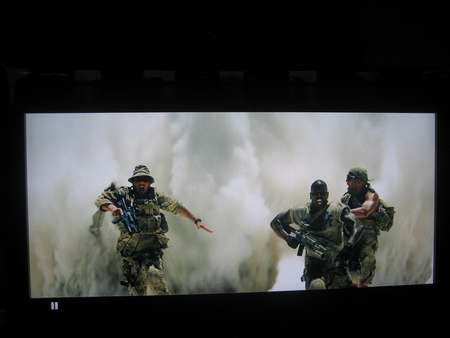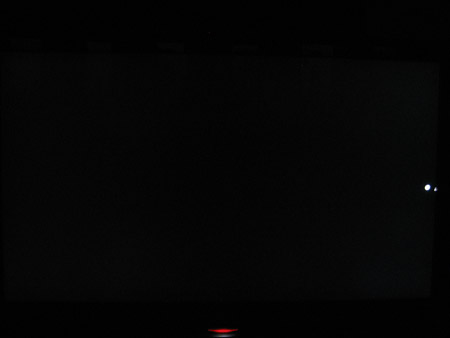Review: Samsung 8 series
Introduction
Samsung has introduced an impressive amount of new TVs lately. Both new plasmas and LCD-TVs have seen the light of the day. We have already reviewed Samsung's new 5 plasma series which is a large, value-for-money TV and now we have received a LCD-TV from the 8 series. It is characterized by a unique new design concept from Samsung, under the slogan"Touch of Colour".
We will be testing the 40-inch version in the 8 series called LE-40A866.
Panel size: 40" widescreen (LCD) Resolution: 1920x1080 Response time: - Contrast ratio: 70000:1 (dynamic) Brightness: 500 cd/m2 Colours: 16,7 million colours Signal processing: 8 bit for each colour Viewing angles (H/V): 178°/178° Dot pitch: - Panel (Type): LCD (Samsung) Power consumption: 240W Wall mounting: Swivel stand: Dimensions (HxWxD): 66.8cm x 98.7cm x 4.4cm (without stand) Weight 15,9 KG Built-in speakers: 2x10W
Inputsr: 480p/i, 576p/i, 720p, 1080i & 1080p (50, 60 & 24p) 1:1 pixel mapping: Inputs • VGA • DVI (can be converted through HDMI)
• Audio (type) (Audio in/out)
• SCART (2 inputs)
• S-video • Composite • Component 
• HDMI (4 inputs)
• Other Outputs • Audio (type) • SCART • S/PDIF (optical)
Tuners • Analog • DVB-T • DVB-T (MPEG4) • DVB-C • DVB-C (MPEG4) • DVB-S • DVB-S (MPEG4) • Other Guarantee: - Pixel guarantee: Etc:
Price and retailer
Our first impressions
The 8-series has a balanced and thin design. The thin, red silhouette at the edge of the frame is part of the Touch of Colour philosophy by Samsung.
The TV has two remotes; one regular remote; one shaped like a rock. I will elaborate on the “rock” remote later but let us first look at Samsung's new design philosophy.
One element in the"Touch of Colour" design is the light silhouette at the edge of the screen. At the top, bottom and two sides of the frame, the screen has a slightly reddish “touch”. The frame is made from glossy black plastic; Samsung’s trademark.
The TV not very deep and probably the thinnest TV yet from Samsung. All inputs are facing towards the wall which is a problem if you want to mount the TV close to the wall.
The stand is elegant and slim. It has the same glossy black finish. It also offers a swivel function.
On the left side of the frame some inputs for digital cameras and camcorders - including a HDMI input – is located.Test tools
Our TV signal is DVB-S (satellite) and DVB-T (terrestrial). We also have an analogues TV connection.
Testing is done with the DVE (digital video essentials) and Peter Finzel test DVD. Testing is also done with DVD, TV, Blu-Ray and Mediacenter/PC.
We also use our own monitorTest . The software supports some of the traditional test patterns used to evaluate displays as well as some new and unique test patterns developed by the people here on Flatpanels.
Sony PlayStation 3 is our Blu-Ray player.Functionality
The Samsung 8 series comes with two remotes. It may seem strange but it is actually a handy feature. One of them is a traditional remote control with egular buttons and functions. It has large buttons and a glossy black design.
The combination of colours is confusing to the eye and the remote looks cheap. There’s a wheel at the middle of the remote which can be used to navigate in menus. The wheel feels cheap as well and is almost unusable because of the sluggish reaction. Fortunately you can also use up, down, left and right as buttons – thank you Samsung.
The second remote is a small plastic thing shaped like a rock. It is oval and only has 5 buttons; volume up and down, channel up and down, as well as a power switch. This small device fulfils the basic needs of a remote. It is unobtrusive and easy to use. The only thing I miss is a input selector button.
The OSD menu offers some colour profiles and some advanced picture settings. Colour profiles include: Standard, Movie and Dynamic.
You can control these settings: backlight, brightness, contrast, sharpness, 6-step RGB (red, green, blue), colour and tint. In addition it is possible to activate or deactivate circuits such as dynamic contrast, edge enhancement, black adjust, and 100 Hz.
The 8 series also has DLNA functionality. DLNA allows wirelessly streaming of music, movies and pictures on a wireless home network.
You can install the included software on a PC or laptop. In the program you select what music, movies and what images that should be accessible on the network and the content will be visible on the TV.Picture quality
”Out-of-box” picture parameters is measured below with our LaCie blue eye pro calibrator:
The graph says this:
The number on the left is the delta value. Delta is a difference between to factor, here it’s the difference between the measured colour on the panel and the actual colour that is our target.A delta value lower that 2 results in a visible deviation from the actual colour. A delta value over 4 or 5 results in wrong colours. A delta value between 1 and 2 results in precise but not perfect colours. A delta value lower than one results in almost perfect colours. The target is 0. Everything between 0 and 1 is barely visible to the human eye.
My initial measurement is based on the default profile. The result is fair and proves that Samsung has turned some of the charm off on the Default profile. The colours are too saturated but not extreme and the picture quality is better than it was on the last generation of Samsung LCD-TVs - even before calibration. I do recommend, however, that you refrain from using the profile called dynamic; it has terrible picture settings.
My measurements indicate several things, but first and foremost it indicates that the panel has a slightly incorrect gamma. This means that the balance between dark and light colours is not entirely correct. I’ll try to change this with a calibration. Colour temperature is too high and the picture is therefore bluish - it is very common on LCD-TV sets that the colour temperature is far too high.
Colours are not perfect either; too much blue; too little red. Green is set a bit too high. I’ll try to calibrate the image in order to achieve better picture quality below. Afterwards I’ll elaborate on the process and results and will be talking bout the picture in practice.
Below are the calibrated settings:
After calibration Profile: Movie Backlight: 3 Contrast: 85 Brightness: 45 Sharpness: 0 Colour temperature Warm2 Gamma: 0 100 Hz: Off Dynamic contrast Off Black Adjust Off Colour Space Auto Edge enhancement Off Skin tone 0 RGB: Manual • Red-Offset-: 26 • Green-Offset-: 26 • Blue-Offset: 21 • Red-Gain: 26 • Green-Gain: 25 • Blue-Gain: 21
I have based my calibration on the profile called Movie because it has the best “out-of-box” settings. At first you might find the picture to be very"hot" (reddish) but this is correct and after a short time you will grow accustomed to the new picture and find the bluish picture wrong. We aim for a colour temperature of 6500 Kelvin.
I have reduced the brightness. Additionally, I have turned off most dynamic circuits, such as dynamic contrast, as they do not contribute to proper image reproduction. They might contribute some way but simultaneously they create new problems.
After calibration the picture is significantly better but I was unable to get the gamma correct. This means that the picture is slightly too dark in dark scenes (gamma is too high here) and a bit too bright in day scenes (gamma is too low here).
In practice DVD playback and SD pictures are reproduced nicely. Off course the picture is “softer” than on HD signals but the 8 series manages to reproduce SD transmission well. The SD picture is not as good as on the best plasma TVs on the market, however, but the 8 series impress us with one of the best SD pictures on LCD-TVs today.
I think that Samsung has raised the bar and the 8 series produces the best SD pictures from Samsung I have ever seen - be it LCD or plasma. Image properties have been improved but there are still some image problems that I have experienced on Samsung TV sets before. I’ll get back to these later on.
The TV handles signals correctly and I did not experience serious banding or jaggies.
HD pictures are surprisingly good. In comparison with Samsung's new plasma models – for example the 5 series that we have reviewed - the 8 Series comes out as the winner even though it’s only a 40 inch model. The degree of detail is very high and although there are some problems with the reproduction of the very dark shades and shadow detail 40A866 performs very well.
It is a pleasure to watch HD on the screen and the picture surprises me taken Samsung's previous generation TVs in mind. The HD reproduction is one of the parameters that Samsung has improved most considerably.
The TV also supports 1080p24 and Blu-Ray movies are played beautifully. The degree of detail on static pictures is impressive but the motion resolution is lower than the actual resolution meaning that fast paced scenes are not reproduced as well. This is due to the response time which is still not perfect on LCD-TV sets.
Samsung has once again incorporated their 100Hz system that I have criticized before because of the unnatural effect it has on the picture as well as its many calculation errors / artefacts, such as noise around moving objects.
The noise has been reduced to a minimum (though it still occurs) with this new version and the system has without doubt been refined. The experience of the picture remains the same, however, and this unnatural look continuous to bother me. Some might like it but personally I still prefer to turn off the 100Hz system on Samsung LCD-TV sets.
The 100Hz system is capable of reproducing much more smooth motion but sometimes it seems as if the movie was recorded as a documentary rather than a real movie.
On bad recordings or recordings with noise it can seem as if the image is recorded with a camcorder and someone actually mentioned this when we saw a clip from Saving Private Ryan during the time I had this TV around.
The TV has some problems reproducing very dark shades. Black is not completely black and shadow detail is not perfect either. The slightly too high gamma is one of the reasons.
I also measured black and the contrast ratio. As seen below the panel has a relatively deep black but the road to Pioneer’s KURO reference level is yet long. Some of the new Samsung LCD-series has LED backlight systems that should improve blacks. The 8 series does not have LED backlight, however.
So; black has been improved but it’s not perfect. It’s evolution; no revolution.
| Out-of-Box | After calibration | |
| Black | 0,12 cd/m2 | 0,07 cd/m2 |
| Brightness | 280 cd/m2 | 99 cd/m2 |
| Contrast ratio | 2333:1 | 1414:1 |
Contrast ratio: +/- 50
Please note that the screen has a glossy panel which means that dark colours reflect light during the day.
I have also studied the light homogeneity below:
There are some problems with homogeneity and it is a shame. After I reduced brightness, however, the backlight bleed is reduced to a fair level. But from a TV in this price range you would expect close to none light bleeding. Please note that backlight bleeding might be specific to this demo model.
PC and Mediacenter
The TV accepts a 1920x1080 signal from a PC or mediacenter. 1:1 pixel mapping is supported as well.
Viewing angles
Viewing angles on LCD-TVs are not perfect and in the last few years not much progress has been made. Samsung uses its own S-PVA technology which is produced together with Sony.
From angles the TV looses both colour intensity and contrast. It is especially visible on dark shades, which are significantly brighter from large angles. Viewing angles, however, are better than on the Pioneer KURO LCD-TV that is placed next to this Samsung TV on my TV rack at the moment.
Viewing angles below:
Sound
The sound is provided by hidden speakers and is rather weak. Especially the low and deep tones are suffering.
Voices are distinguishable, however; which is good as this is a common problem on hidden speaker systems.
Conclusion
The same old trivial story about how a product has improved over last generation applies to the 8 series, too. But nevertheless I think it’s important to tell it. In the TV business it sometimes seems that manufacturers move sideways instead of forward. They incorporate a new technology to solve some problems, but creating new ones in the process. It’s two steps forward and 1.5 back again.
Samsung's 8-Series is a true improvement over previous Samsung LCD-TVs in terms of picture quality, though.
Picture quality is better than ever before and I’m impressed with HD playback which is really nice. The panel has some problems with response time in very fast scenes but most of the time HD is razor sharp and very convincing.
SD pictures are also nice and better than both Samsung’s old LCD and plasma series but it’s no Pioneer KURO, and especially analogue pictures are far better on Pioneer’s reference TVs.
Colours are reproduced relatively accurately, just refrain from using the profile called Dynamic. It's nice to see that Samsung has reduced some of the picture parameters to reasonable levels. All in all I’m actually pleasantly surprised with the picture quality on the 8 series.
The 100Hz system has been refined but it still makes movies seem like documentaries or as if they are recorded with a camcorder. It is fine for console gaming but otherwise I recommend you turn it off.
Functionality is comprehensive but the large remote control is too cheap. The DLNA feature on the other hand is great and the possibility to streaming music, film and photos wirelessly to your TV is just genius.
To sum up I have to say that the Samsung 8 series convinced me enough to award it with our Top Recommendation Award. It’s not the best TV on the market and Pioneer is definitely better but the 8 series is an honourable TV set.

Press the award logo to learn more.
| Pros | Cons | Target group |
| Picture quality | 100 Hz system | Living room |
| Functionality and DLNA | Cheap remote | Home cinema |
| HDTV picture | Motion in HDTV pictures |
---
For questions and comments please visits this thread in our forums: http://www.flatpanelshd.com/flatforums/viewtopic.php?f=5&t=23


